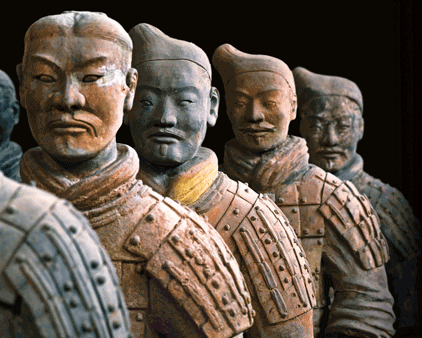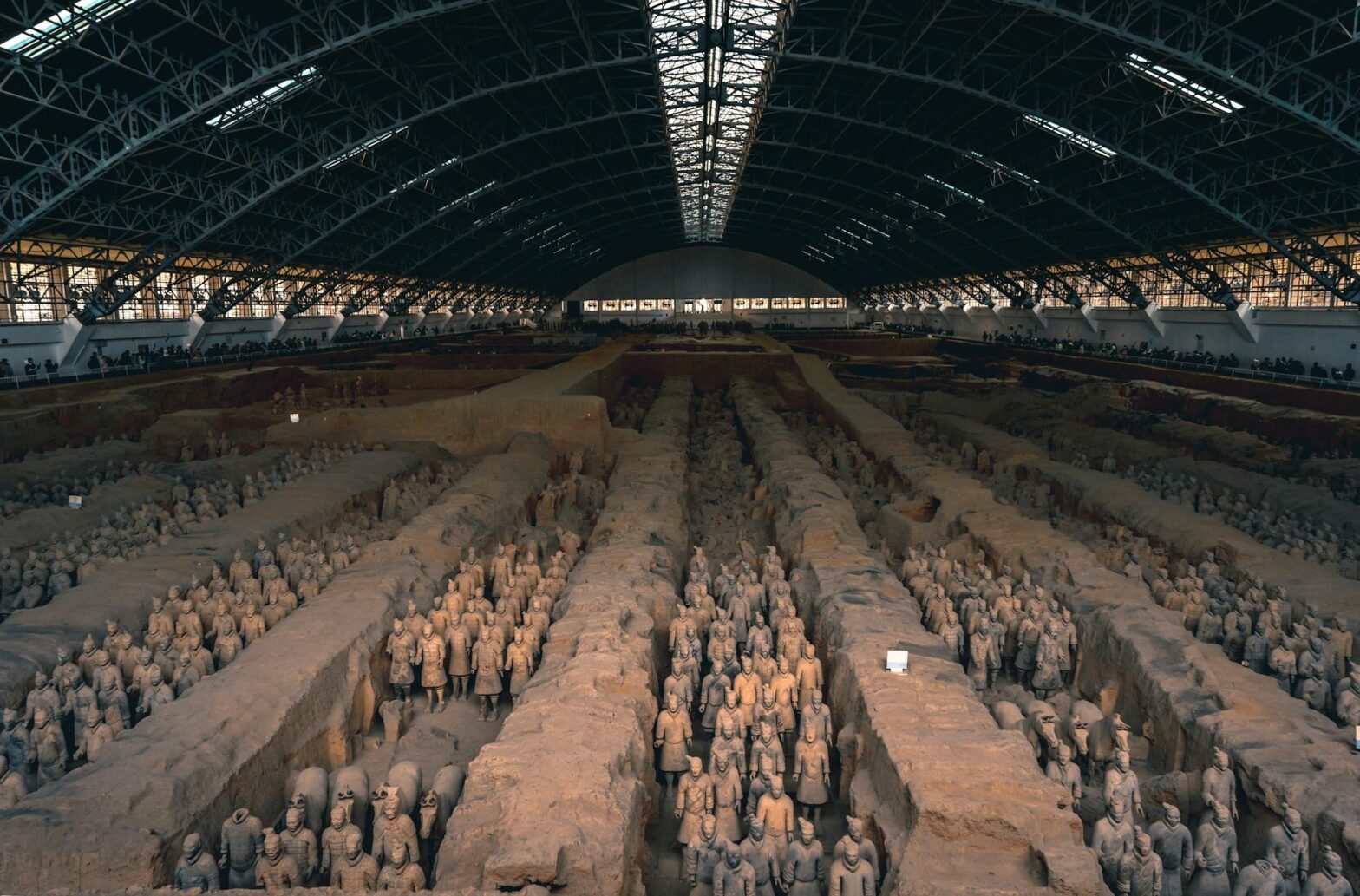New research reveals that the famous terracotta warrior army buried near Xi’an, China was directly influenced by ancient Greek sculpture. There has been no previous archaeological record or written evidence of interaction between these cultures. Yet students of history are familiar with many legends and myths that hint at a network of ancient travellers that disbursed technical and cultural advancements around the world.

Updates found below at end of original article.
Marco Polo managed to make it home to Venice to write about his fantastic adventures. How many other such adventurers did not survive to tell the tale? I am of the school that throughout the eons of human existence there was a great deal of interaction that we can only guess at. Yet, by definition, the evidence is nearly all circumstantial; very little is documented.
Perhaps the most famous speculation involves Jesus and his connection to Buddhism. Historical evidence as well as quotes within the Bible indicates that Jesus was well acquainted with Buddhism. If Jesus did not travel to India during his “lost” years, then at least Indian ideas traveled to Judea and Jesus. This region was a center for trade between India and the West both by land and by sea. Overland routes extending to Persia and western India were well established after Alexander’s invasion of India 360 years before Jesus and just a few years before the statutes were created in China. More on Greeks in India during Jesus’s time: Ancient Greeks in India – Visit Ancient Greece (visit-ancient-greece.com)
The First Emperor of China marked his ascent to the throne in 221 BC with the erection of twelve giant bronze sculptures outside his palace. Later he had the vast terracotta army manufactured for his future tomb. The bronze sculptures were destroyed by his successors as were all records of his tomb which was not discovered until 1974.
The army figures are truly amazing. Although mass produced they contain a great deal of variety as well as individualized features. In addition to soldiers, generals, chariots and horses there are acrobats and musicians; many showing very advanced sculpture techniques. The majority has not yet been uncovered in order to preserve their paint and details but it is estimated there are about 9000 figures.
Such life size or larger art was not part of Chinese culture before or after this brief period. So where did the skills come from? It took the ancient Greeks over a thousand years to reach that point of artistic development. The newly translated ancient Chinese documents clearly point to a connection with the far west of China near where Alexander the Great’s army had brought its sculpture traditions.
Here too there would have been a great deal of undocumented interaction along the trade routes. Artists, explorers, criminals, whoever wanted to move on the fringes of society would both learn from and teach those people whom they travelled among. Which leads me to a question only the future can answer: How many more discoveries of which history bears no record, such as the buried Chinese army, will be made with modern technology or purely by chance?
December 2019 Update: Aha! There is a partial answer in recent discoveries near Pylos, Greece. Follow the thread in my New Discoveries page
June 2024 Update: Comprehensive look at controversy of cultural creativity in this article: Why there’s so much backlash to the theory that Greek art inspired China’s Terracotta Army
2025 Update: Our umbrella site, TravelShepherd.com, is now featuring a series of articles about India. Starting with a pilgrimage called Kanwar Yatra and including cost of living estimates for Delhi.
